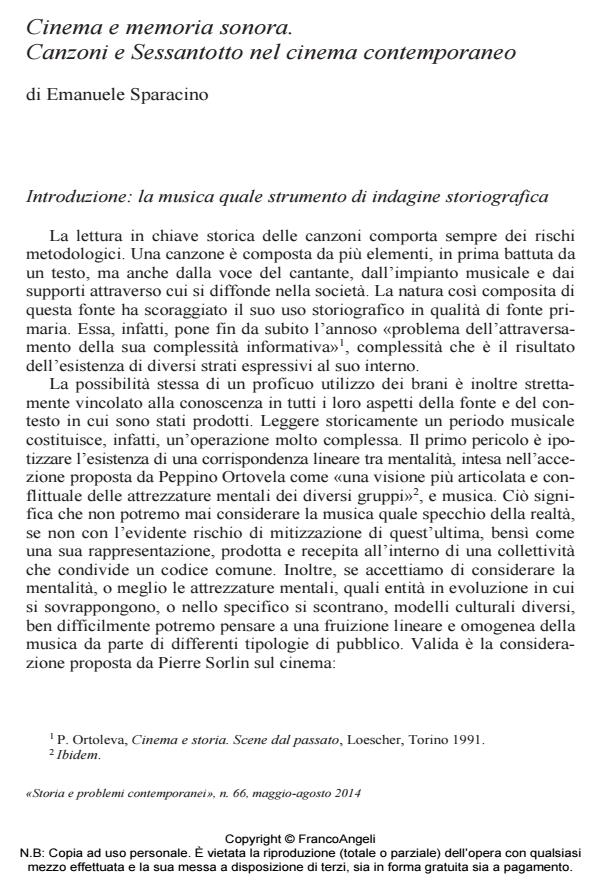Cinema e memoria sonora. Canzoni e Sessantotto nel cinema contemporaneo
Titolo Rivista STORIA E PROBLEMI CONTEMPORANEI
Autori/Curatori Emanuele Sparacino
Anno di pubblicazione 2015 Fascicolo 2014/66
Lingua Italiano Numero pagine 20 P. 69-88 Dimensione file 122 KB
DOI 10.3280/SPC2014-066004
Il DOI è il codice a barre della proprietà intellettuale: per saperne di più
clicca qui
Qui sotto puoi vedere in anteprima la prima pagina di questo articolo.
Se questo articolo ti interessa, lo puoi acquistare (e scaricare in formato pdf) seguendo le facili indicazioni per acquistare il download credit. Acquista Download Credits per scaricare questo Articolo in formato PDF

FrancoAngeli è membro della Publishers International Linking Association, Inc (PILA)associazione indipendente e non profit per facilitare (attraverso i servizi tecnologici implementati da CrossRef.org) l’accesso degli studiosi ai contenuti digitali nelle pubblicazioni professionali e scientifiche
The aim of the article is to investigate the interpretation given by four contemporary movies about the decade from 1968 to 1978 through the analysis of their soundtracks. The movies are The dreamers (2003, by Bertolucci), La meglio gioventù (2003, by Giordana), Après Mai (2012, by Assayas) and Il grande sogno (2009, by Placido). The analysis concerns specific scenes and their background music. It shows what has remained in the collective imagination of the so-called "Sessantotto". Therefore, the movies propose only the more "romantic" aspects of "Sessantotto", a season where it was still possible to imagine one owns future and society’s, barely hinting at terrorism and disenchantment that shortly would have followed.
Emanuele Sparacino, Cinema e memoria sonora. Canzoni e Sessantotto nel cinema contemporaneo in "STORIA E PROBLEMI CONTEMPORANEI" 66/2014, pp 69-88, DOI: 10.3280/SPC2014-066004